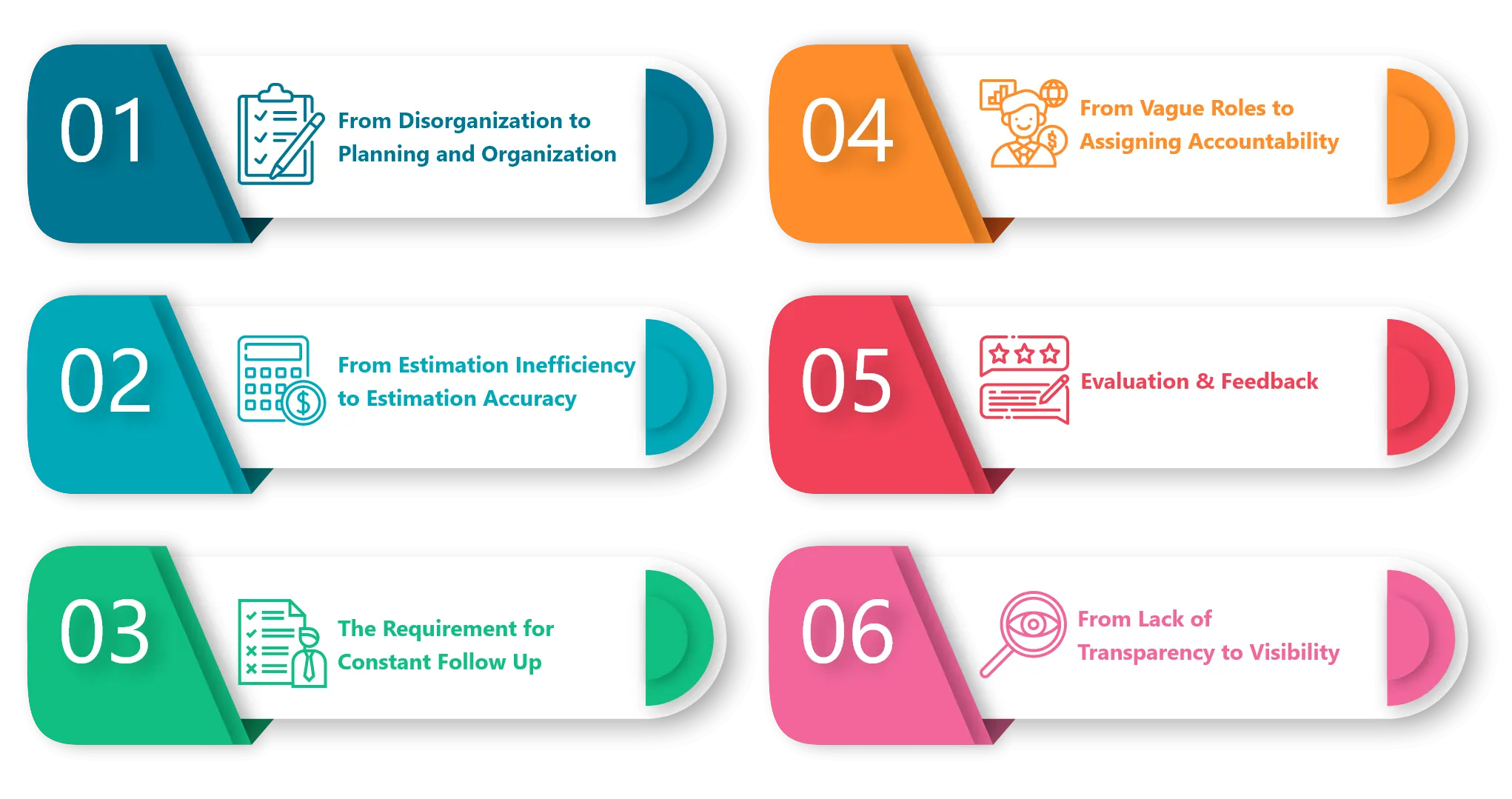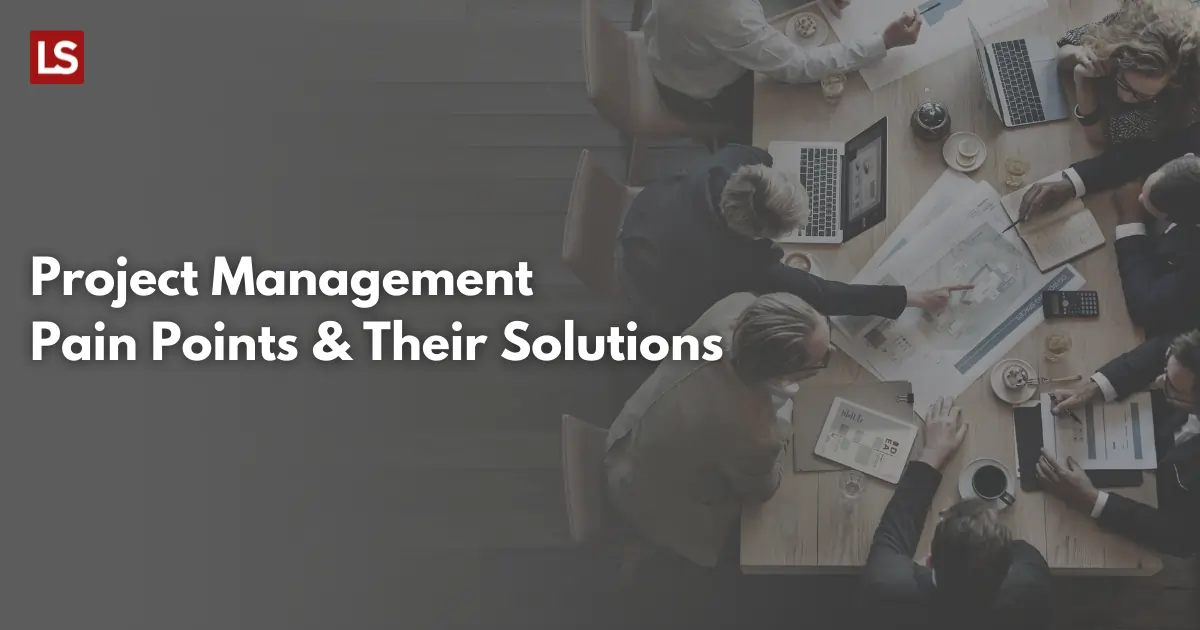Just like evolution was necessary for humans to come up where we are today by considering the necessary changes that were required to develop, the project management domain is not an exception. Ever since the working methodologies have been put in place, it demanded constant changes.
As any software keeps getting upgraded to compete with the latest environment, managing a project also needs an immediate upgrade with changing times, addressing any blockers promptly, keeping the team in liaison, getting the work done, and meeting the ticking time clock.
Managing all this could be related to time ticking bombs, the faster it gets diffused, the better. The whole Project team having all the members under one roof is a long-forgotten time. In this new-fangled era of working remotely, fetching outsourced services, and communicating all are novice challenges to projects.
Basically, project management is a process to seamlessly manage all the phases of product development from planning to deployment. Lacking a proper and well-organized project management process may put your project at risk. The risk of not meeting all its goals, deliverables, or even failing.
Project Management is not as easy as it seems especially when a project is complex and multifaceted. This article intends to describe the 6 most common IT project management old pain points and their new solutions:

From Disorganization to Planning and Organization
Setting goals with accurate planning and organizing the processes accordingly while defining all the roles clearly is among the most challenging parts of project management. Lack of clarity about the project requirements leads a project manager to set the wrong direction for the development team and the organization of the processes. Another challenge of this phase is keeping track of all the assigned tasks simultaneously. A project involves different roles and responsibilities and supervising them all together sometimes becomes really difficult.
To avoid such issues you first need to make sure that all the project requirements are clearly documented and shared with the client. When you have everything written and your client’s approval on that, you are nowhere going to lack project vision. To track all the tasks seamlessly and effectively, you can search for a nice and reliable tool like Jira and LiquidPlanner, using a tool will also help you to save some time and focus on other important project responsibilities.
From Estimation Inefficiency to Estimation Accuracy
An estimation can make or break a project!!
Yes, it is indeed very true. Sometimes project managers commit an unrealistic timeline without considering the development complexities and potential risks. Being optimistic they make commitments to the clients and impress them at first but, later when they get to meet these technical challenges, they have to stretch the expected timeline to a great extent, and that is where they lose the clients’ trust and their brand value as well.
However, a simple step of considering the potential development risks and their impacts can help you be more realistic with your estimated timeline and save you from the embarrassment of committing a faulty estimation.
The Requirement for Constant Follow Up
In order to make sure that the project’s progress is going in the right direction, a project manager needs to keep a close eye on all the ongoing tasks and every individual’s performance. Here, the requirement for constant follow-up occurs. Managers working on multiple projects at the same time find it difficult to fulfill this need as they lack time and this is how they end up with an unorganized and tangled workflow that sometimes leads to drastic management failures.
To avoid this, a project leader needs to understand the significance of constant follow-up and do all the possible things to stay involved in every segment of project development. There are tools that can help you stay updated about your multiple project’s progress and will also remind you about what follow-ups you need to take? and when?
From Vague Roles to Assigning Accountability
Determining roles and responsibilities is among one the most important aspects of project management. It can be really challenging for the managers to select who will do what? Especially when multiple individuals or teams are involved in a project and working towards the accomplishment of the same task.
Here, project leaders have to assign accountability as per the expertise and experience of the individuals. They have to make sure that they set clear and achievable goals with each and every team member so the expected result could be achieved on time.
Evaluation & Feedback
A project manager not just ensures the successful accomplishment of the project but also oversees the performance of each and every associate involved in that project. Evaluating the team’s performance he further guides the team members with his suggestions or feedback and makes sure that all of them are on the same page and well-aligned with the project vision.
Sometimes project leaders get stuck in other important tasks and couldn’t take out enough time to evaluate the team’s performance. This is where they make a major mistake because providing regular suggestions or feedback keeps the process in the right direction and avoids the gaps. Ensuring there is no room for mistakes, evaluation is the key responsibility of a project leader that he must take head-on.
They can also incorporate tools in their evaluation practices to effectively perform the evaluation task while enhancing transparency and establishing a constant feedback loop within their teams.
From Lack of Transparency to Visibility
As every project has its own significance, each of them has some complexities as well like specific requirements, dependencies, documentation, etc. And juggling multiple projects simultaneously, a project manager is usually overloaded with lots of crucial information that he has to share with the team members as per their roles and with the stakeholders almost regularly.
Here, the struggle is to manage that information in a productive way as the ultimate goal of project visibility is real-time status at a glance of all the processes and updates for all the team members and stakeholders.
Real-time updates about the processes keep the team’s productivity high and enable you to effectively make decisions and empower your team to work more efficiently. Project visibility ensures optimization of all the processes, delivery of the product value, and efficiency of the entire project hence, being a project manager it is your responsibility to build an environment that facilitates better project visibility for both the team and the stakeholder.
To do so, you can choose a software that automatically updates the status of the updated processes, pending or completed tasks. Using a smart tool like Confluence and LiquidPlanner will enable you to free up some time for other important segments of the projects and improve your projects’ flow efficiency.





Don’t you think that project management style is also a pain point? A brief on it will also help to understand the 360 degree aspect of pm.
Thanks for reading! I concur, choosing one of the styles could be! I can shed some light on project management styles to choose aptly that can help to determine which would be most effective for small/large businesses…